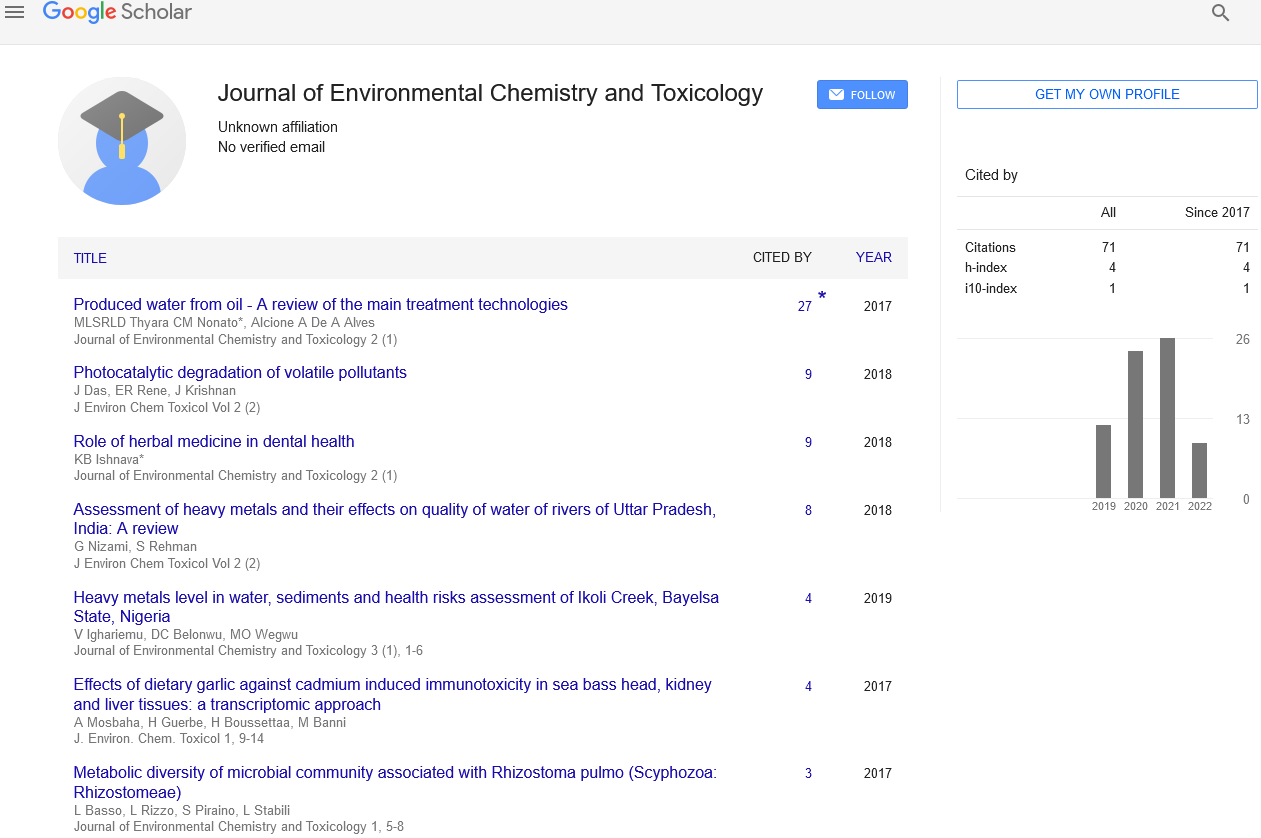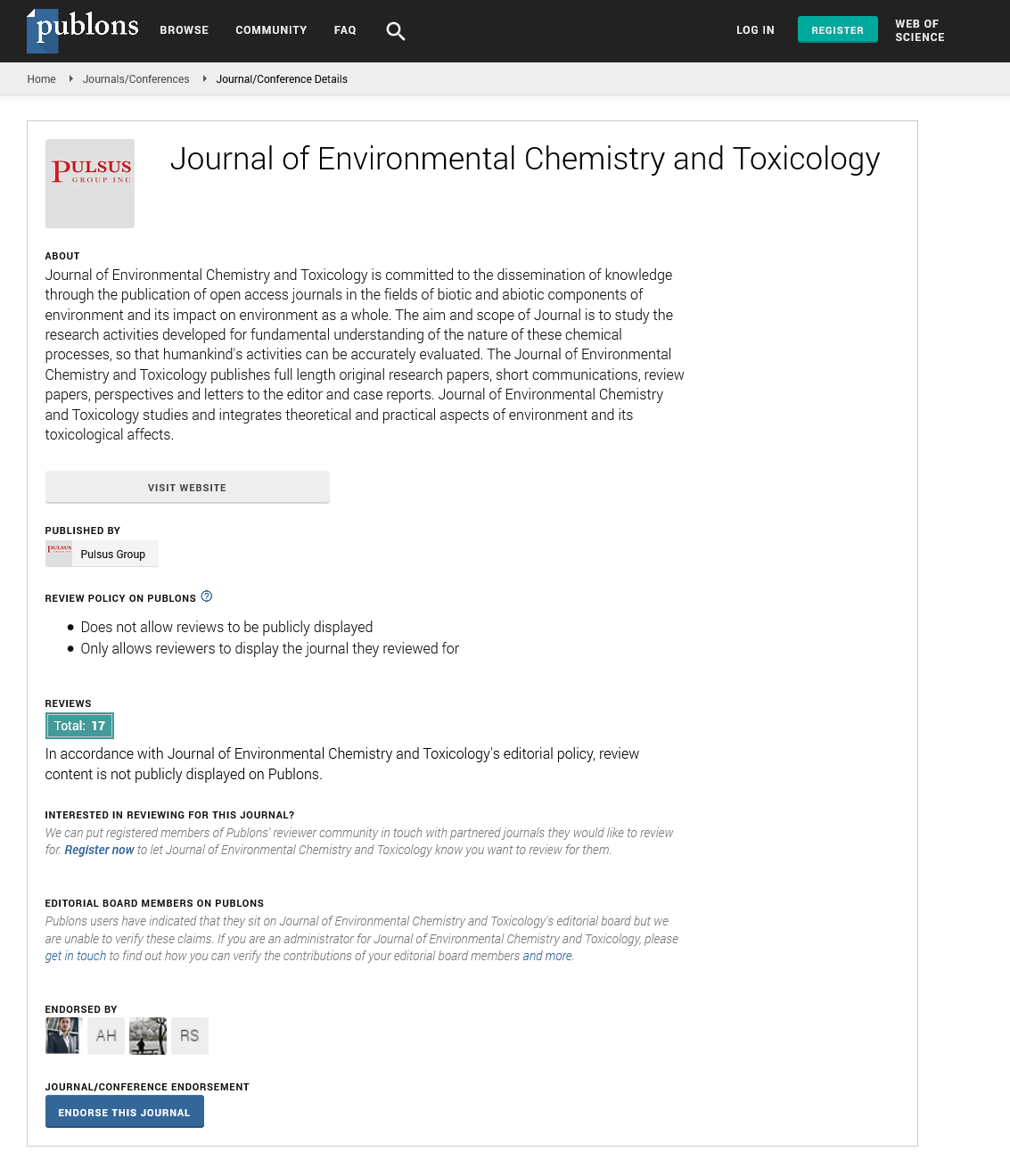Hydro-Environmental Changes
Received: 14-Jul-2021 Accepted Date: Jul 23, 2021; Published: 28-Jul-2021
Citation: Sushobhan P. Hydro-Environmental Changes. J Environ Chem Toxicol 2021;5(4):1-1
This open-access article is distributed under the terms of the Creative Commons Attribution Non-Commercial License (CC BY-NC) (http://creativecommons.org/licenses/by-nc/4.0/), which permits reuse, distribution and reproduction of the article, provided that the original work is properly cited and the reuse is restricted to noncommercial purposes. For commercial reuse, contact reprints@pulsus.com
Commentary
The study of variations in water level and discharge in response to earthquakes can reveal aquifer property changes such as pore pressure and permeability. Numerous records in ancient texts and current scientific articles recording these changes show that the observations are universal and worldwide occurrences common in active seismotectonic locations. This type of hydrogeological shift can alter the water-rock interaction and material transportation systems, resulting in changes in hydrochemical and biological fingerprints. However, the effects of seismotectonics on hydro habitats, an important component of research and human life, are still little understood, necessitating a multidisciplinary approach to address these challenges. The causes and processes of hydro-environmental changes caused by seismic activity are frequently assessed on a regional scale using a spatiotemporal dataset of physicochemical and biological factors.
However, due to the high cost of monitoring in areas where significant earthquakes are likely to occur, such long-term monitoring is usually difficult, despite the fact that various monitoring networks have recently been created in some nations. As a result, employing data constrained to a specific location and time, a significant advance in understanding of the sector of earthquake hydrology has been achieved. We haven’t been able to fully comprehend these systems due to the scarcity and sporadic nature of opportunities to document events. This Special Issue strives to expand and deepen our understanding by efficiently exploring numerous subjects linked with recent earthquakes using a multidisciplinary approach. Previous studies are briefly summarised here to highlight their importance what has been offered so far, and what questions remain unanswered.
The primary mechanisms used to explain observed fluctuations in water level and discharge are usually divided into five categories: permeability changes induced by seismic waves and cracks in shallow systems, soil porewater release caused by seismic vibration, fluid migration along dilatant cracks or deep crustal ruptures, and pore-pressure response to crustal elastic strain changes in response to liquefaction or consolidation. Apart from near-field events like water transportation along seismogenic rupturing, the accompanying hydrological reaction can be seen in wells relatively far away from the epicentre since the crustal strain change and seismic wave can propagate within the order of 103 km. Previous research has identified these mechanisms and provided a qualitative explanation for observed hydrological changes. However, no proper quantitative chemical study of such alterations at the watershed scale has been done, which would necessitate the use of hydrogeological modelling. Furthermore, the number of studies accessible is restricted, and additional research is needed to have a better knowledge of the system. Second, changes in water chemistry and isotopic fingerprints can be caused by hydrogeological changes.
Deep and hydrothermal fluid injection, mixing of waters from different aquifers, infiltration of soil waters and pollutants through new channels, and rock weathering enhancement in new rupturing are some of the key processes postulated to explain these changes. Long-term hydrochemical and H and O isotopic monitoring at a given location revealed an in-depth hydrochemical changing system. However, because there was a dearth of a spatial dataset to explain chemical anomalies that covered entire watersheds on a regional scale, changes within the size of active groundwater flow systems, including pollutant transit, were poorly understood.






